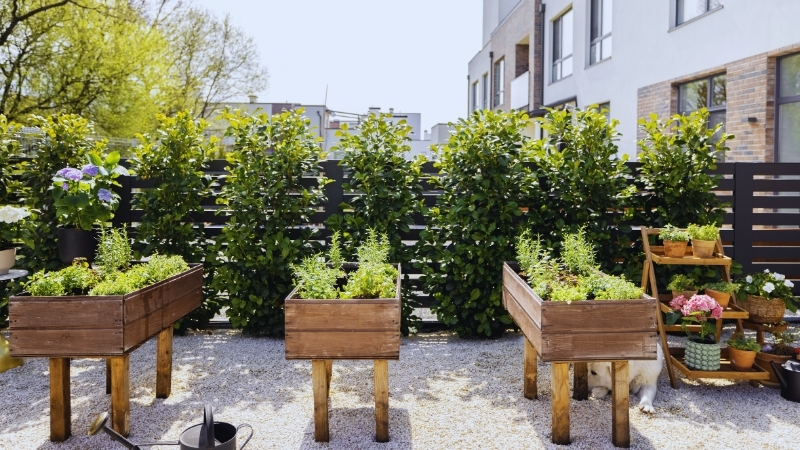A sustainable home garden is a step toward eco-friendly living, providing fresh produce all year while reducing your carbon footprint. Achieving a garden that produces year-round harvests requires careful planning, a mix of native plants, and implementing sustainable practices.
Choose Native Plants for Resilience
The first step in creating a sustainable garden is selecting native plants. These plants are already adapted to the local climate, requiring less water, fertilizer, and pest control. Incorporating hardy vegetables like kale, spinach, and carrots, which thrive in various weather conditions, ensures your garden remains productive throughout the year.
Maximize Space with Crop Rotation and Companion Planting
For year-round success, it’s essential to maximize your space with crop rotation and companion planting. Rotate crops like beans, tomatoes, and lettuce to maintain soil fertility and reduce the risk of pests and disease. Companion planting — growing plants like basil near tomatoes — helps improve growth and keeps pests at bay.
Use Compost for Nutrient-Rich Soil
A key component of sustainable gardening is creating nutrient-rich soil. Use compost made from kitchen scraps, garden waste, and organic materials to enrich the soil. Composting not only reduces waste but also improves water retention, which is critical for plant growth.
Install a Rainwater Harvesting System
Water conservation is vital for a sustainable garden. Installing a rainwater harvesting system helps collect natural water sources, reducing dependency on municipal water supplies. It’s an eco-friendly solution that supports plants during dry seasons, ensuring consistent growth.
Seasonal Planting for Year-Round Harvests
To maintain a constant supply of produce, plan seasonal planting. Cool-season crops like broccoli and Brussels sprouts should be sown in fall and harvested through winter. Warm-season crops like tomatoes and cucumbers can be planted in spring for summer harvests. Stagger planting times for consistent production.
Conclusion
With careful planning and eco-friendly practices, you can create a sustainable home garden that provides fresh produce year-round. By choosing native plants, utilizing compost, and conserving water, your garden can thrive in any season.
FAQs for a Sustainable Home Garden
Q1. What are the benefits of choosing native plants for my sustainable garden?
Answer: Native plants are adapted to the local climate and soil conditions, making them more resilient and easier to maintain. They require less water, fertilizer, and pest control, which helps reduce your garden’s environmental impact while providing a habitat for local wildlife.
Q2. How can I effectively implement crop rotation and companion planting in my garden?
Answer: Crop rotation involves changing the location of different plant families each season to improve soil fertility and prevent pests and diseases. Companion planting involves grouping plants that benefit each other, such as planting basil with tomatoes to enhance growth and deter pests. Research compatible plants and plan your garden layout accordingly.
Q3. What materials can I use to create compost for my garden?
Answer: You can create compost using kitchen scraps (like vegetable peels and coffee grounds), garden waste (like leaves and grass clippings), and other organic materials (like cardboard and paper). Avoid using meat, dairy, or oily foods, as these can attract pests.
Q4. How does a rainwater harvesting system work, and how can I set one up?
Answer: A rainwater harvesting system collects rainwater from rooftops, directing it into storage tanks for later use in your garden. To set one up, install gutters and downspouts that lead to a rain barrel or cistern. Ensure the system is covered to prevent mosquito breeding, and use the collected water for irrigation during dry spells.
Q5. What seasonal crops should I plant to ensure year-round harvests?
Answer: For a year-round harvest, consider planting cool-season crops like broccoli, kale, and Brussels sprouts in the fall for winter harvests. In the spring, plant warm-season crops such as tomatoes, cucumbers, and peppers for summer. Stagger planting times within each season to ensure a continuous supply of fresh produce.









